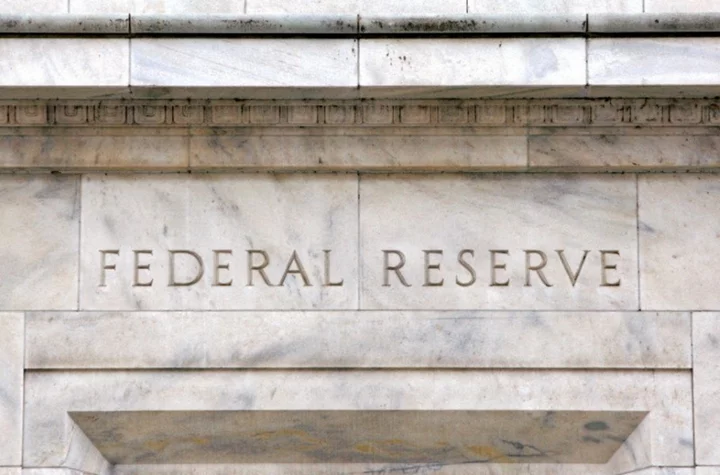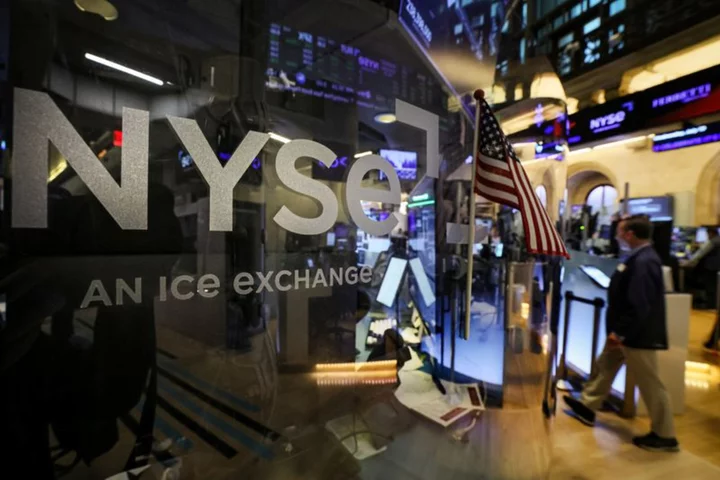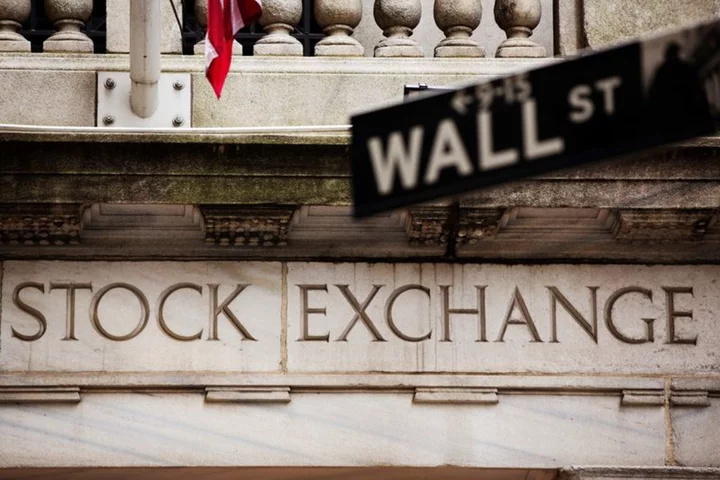As the world's central banks near the end of what has felt like a relentless string of interest rate rises, investors are taking a close look at how consumers and businesses are dealing with some of the tightest credit conditions in over a decade.
China's post-COVID bounce doesn't seem to have happened, while, in the West, Britain and the euro zone have skirted recession and the chances of a soft landing in the U.S. appear to be picking up.
Here is a look at the week ahead in markets from Kevin Buckland in Tokyo; Ira Iosebashvili in New York and Naomi Rovnick, Karin Strohecker and Amanda Cooper in London.
1\A TIRED RABBIT
It's been a tough few weeks (or months) for China - the world's second-largest economy: housing market turmoil is flaring up again, growth and private investment remain fragile, and consumption and services are struggling to deliver on that much hoped-for post-COVID boom.
Markets have been disappointed over the lack of concrete stimulus action following the end-July Politburo meeting, and various sets of PMI data have charted a less than clear path ahead.
China retail sales data due on Tuesday will show whether spending can cling to the around-3% growth rate in June - a far cry from the double-digit readings earlier in the year.
Industrial production is due the same day, as is fixed asset investment and NBS housing sector data, which will provide a health check on the all-important property sector.
2\HOLD ON A FED MINUTE
As the market’s attention shifts to the Federal Reserve’s meeting in Jackson Hole, Wyoming at the end of the month, investors will be focused on minutes from the central bank’s latest policy meeting, as well as U.S. retail sales.
The Fed minutes, to be released on Wednesday, could offer more clarity on the views policymakers held during their July 25-26 meeting, at which the central bank raised rates and left the door open to another hike in September. July's inflation data certainly suggests that this possibility is starting to look like a distant one.
Meanwhile, investors will get another look at the health of the U.S. consumer with Tuesday’s retail sales report. June retail sales, released last month, rose less than expected, but nonetheless showed consumers weathered higher interest rates. A similar result could support the so-called “soft landing” narrative of cooling inflation and durable growth that has buoyed markets.
3\TECHNICALLY, NOT A RECESSION
The euro zone managed to avoid a technical recession in the first quarter of this year, after an upward revision by the statistics agency showed GDP was flat in that time, following a 0.1% contraction in the last quarter of 2022.
Data on Aug 16 could confirm that growth picked up in Q2. A preliminary estimate in late July showed GDP expanded by 0.3% in the second quarter versus the first.
A number of indicators are pointing to a slowdown, including a measure of business activity, which has skidded into recession territory and yet unemployment is at a record low.
Money markets show traders think the European Central Bank might raise interest rates one last time this year, before it starts cutting in the spring.
The GDP figures could offer a steer on what kind of message investors might get next month from ECB President Christine Lagarde.
4\FINDING EQUILIBRIUM
Following a tumultuous couple of weeks, JGB investors finally seem to have found an appropriate level for 10-year yields below the new de-facto 1% ceiling - and it's not far from where they were before the Bank of Japan's surprise policy tweak.
After shooting to a nine-year peak of 6.55% - prompting the central bank to step in to restore calm - yields have settled around 0.58%.
The reason is not the BOJ's heavy hand. Ultimately, there's just too much demand for the bonds after years of sub-0.5% yields.
Investors have also realized that despite the loosening of long-term yield restrictions, the negative short-term rate isn't going anywhere. Policymakers are worried whether a rise in wages will continue, and about the potential shock to exports from China's struggles.
The tug-of-war between rekindling animal spirits at home and slowdowns abroad will be showcased in GDP numbers on Wednesday, following a rapid rebound from recession in the previous quarter's figures.
5\A JOB FOR THE BOE
UK jobs market reports can have a bigger impact on expectations for interest rates than any other indicator, meaning all eyes will be on labour data due August 15 for signs the Bank of England could turn less hawkish.
The BoE, responding to headline inflation of 7.9% in June, hiked rates to a 15-year high of 5.25% on August 3.
The UK public sees inflation running at 4.3% by July 2024, a Citi/YouGov survey found.
Yet some private data suggests that a strong jobs market, which has helped households keep spending, is slackening off. UK labour supply rose at its steepest pace in July since October 2009, the Recruitment & Employment Confederation said.
Analysts widely expect the BoE rate rise cycle to end soon. Morgan Stanley strategists forecast one more hike in September, with a prolonged pause thereafter.
(Compiled by Amanda Cooper; Editing by Sharon Singleton)









